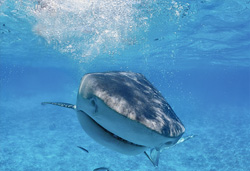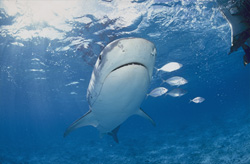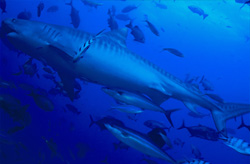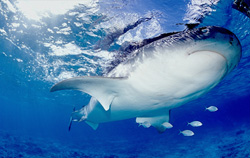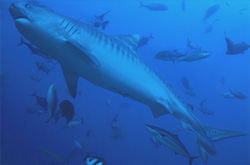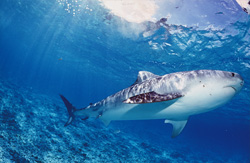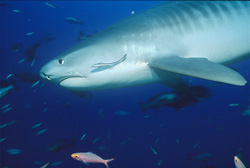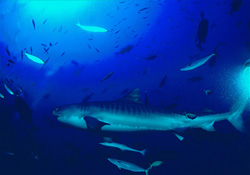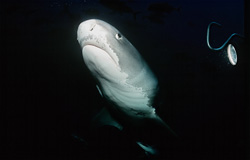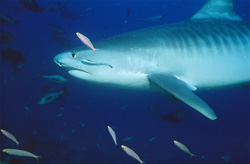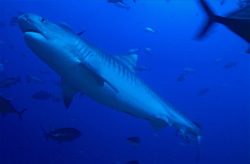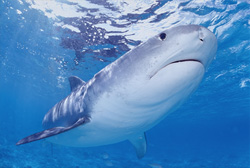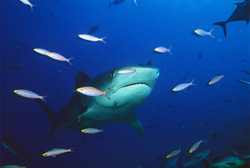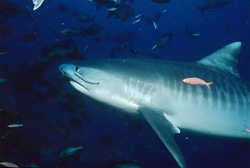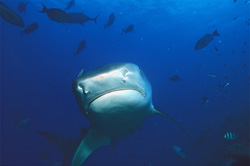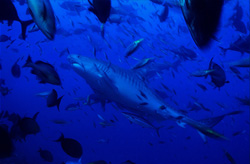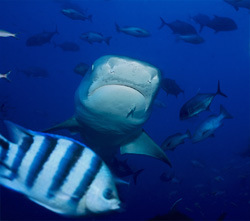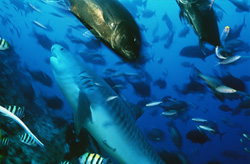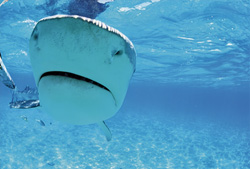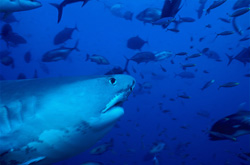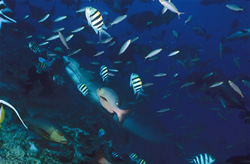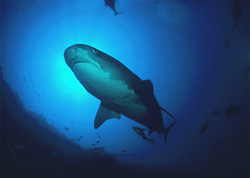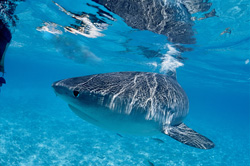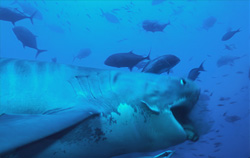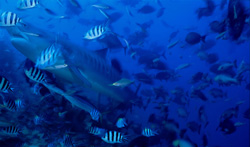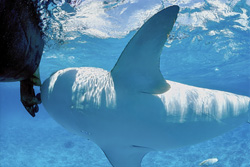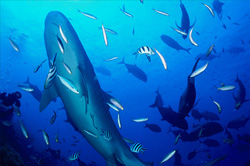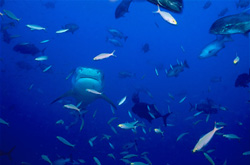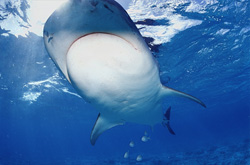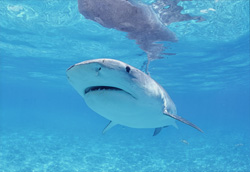Discover comprehensive information about the impressive Tiger Shark, its unique characteristics, habitats, and the vital role it plays in marine ecosystems.
The Tiger Shark (Galeocerdo cuvier) is one of the most fascinating and versatile sharks in the oceans. With its impressive size, reaching over six meters, and the distinctive stripes on its back that fade with age, the Tiger Shark is an unmistakable predator. These reef sharks belong to the family of Grey Sharks (Carcharhinidae) and are characterized by their wide mouths, strong noses, and barrel-shaped forebodies. Known for having the broadest diet among sharks, their menu ranges from sea turtles, seals, sea lions, other sharks, whales, and sea birds to invertebrates, debris, and carrion. This adaptability makes the Tiger Shark a successful hunter across various habitats, from coastal regions to remote island groups like Hawaii, the Marshall Islands, Galápagos, Tahiti, and the Fiji Islands. Despite their impressive presence, adult Tiger Sharks have no natural predators aside from humans, who threaten them through overfishing and habitat loss. The Tiger Shark plays a crucial role in marine ecosystems by maintaining the balance of populations of other marine animals. Its unique jaw structure with teeth strong enough to bite through sea turtles shells and a bite force of up to three tons/cm² make it one of the most formidable predators in the seas. Scientific studies have shown that Tiger Sharks are widely distributed in tropical and warm-temperate waters, inhabiting both shallow and deeper waters. Their migrations can cover impressive distances, making them a fascinating subject for marine biologists. Conservation efforts are essential to ensure the survival of these extraordinary sharks and to guarantee that future generations have the opportunity to experience these majestic creatures in their natural habitats. Our platforms offer a variety of high-resolution images and comprehensive information about the Tiger Shark, providing you with deep insights into its life and significance for the marine world.


